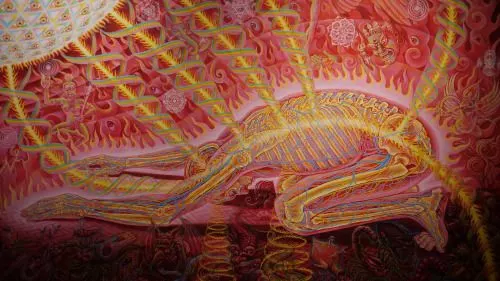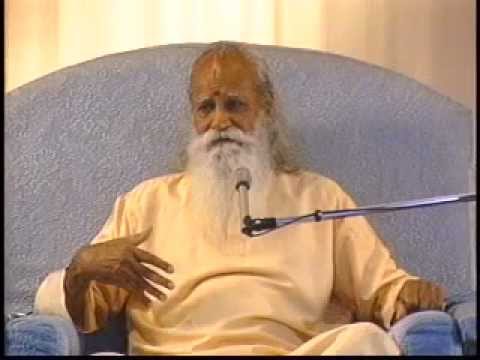The second limb of Yoga in Patanjali’s Yoga Sutras is the practice of Niyamas, or personal observances. Where the Yamas are a series of restraints focused primarily on how one interacts with the outer world (not lying to others, not grasping onto situations, things, or relationships), the Niyamas focus primarily on the practitioner’s inner world.
Practicing the Niyamas gives rise to an increased sense of self-confidence. The root word of confidence is fidere, a Latin word that translates to faith, or fidelity. To have self-confidence means to have faith in oneself, faith that you will move through and interact with the world in a way that feeds you, instead of diminishes you.
One way to look at this is using a Cherokee legend many of you are likely familiar with.
An old Cherokee is teaching his grandson about life. “A fight is going on inside me,” he said to the boy.
“It is a terrible fight and it is between two wolves. One is evil – he is anger, envy, sorrow, regret, greed, arrogance, self-pity, guilt, resentment, inferiority, lies, false pride, superiority, and ego.” He continued, “The other is good – he is joy, peace, love, hope, serenity, humility, kindness, benevolence, empathy, generosity, truth, compassion, and faith. The same fight is going on inside you – and inside every other person, too.”
The grandson thought about it for a minute and then asked his grandfather, “Which wolf will win?”
The old Cherokee simply replied, “The one you feed.”
Integrating the Niyamas into daily life is the active practice of feeding the wolf of love, peace, and serenity. Here are the five niyamas of Yoga ~
Shaucha: Purity of body & mind
“Krishna insisted on outer cleanliness and inner cleansing. Clean clothes and clean minds are an ideal combination.” ~ Sathya Sai Baba
The first Niyama is all about cleanliness, both inside and out. This practice is intimately linked with the practice of Brahmacharya, as the sutras state that as you practice Shaucha, the desires of the body begin to drop away.
Internal Shaucha means ridding your headspace of mental impurities such as anger, jealousy, and greed. Anything that moves you away from the Love that is Divinity is considered an impurity of the mind. This is not a switch you can just flip, though. It requires vigilant attention being paid to your thoughts and, when one of these elements arises, purposefully shift your thoughts toward love.
External Shaucha means taking care of your body and your environment. Eating a plant-based diet full of unprocessed foods, drinking plenty of clean water, bathing regularly, and creating a simplified and clutter-free environment all go a long way towards cultivating outer purity. This, in turn, helps to cultivate inner purity.
Santosha: Contentment
“Henceforth I ask not good fortune. I myself am good fortune.” ~ Walt Whitman
Contentment is the true root of all happiness, self-love, and love for others and the world. It is the practice of accepting the world exactly as it is and recognizing the beauty in it.
The alternative to containment is restlessness and dissatisfaction, this idea that some aspect of reality – a relationship, a work environment, the shape of your body – should be different than it is.
Santosha is not resignation, however. It is not asking the practitioner to not work towards change and improvement inside and out. It is the practice of seeing things as they are, which is the only footing from which you can change.
Santosha is looking at the map, seeing the intersection where you’re standing, and from there figuring out how to navigate to where you want to be, while not pining after this idea that you should already be across town.
Tapas: Fiery discipline
“Everyone must choose one of two pains: the pain of discipline, or the pain of regret.” ~ Jim John
In Sanskrit, Tapas translates to heat. It is the process and practice of passionate self-discipline which creates a crucible effect, burning away impurities. When you feel excited to get on your yoga mat, or determined to take a ten-day Vipassana course, this is Tapas at work.
Often, when the topic of self-discipline comes up, it’s associated with a sense of dread. It means denying yourself what you really want to do for the sake of something you should do. Tapas, to me, is inextricably linked with Santosha.
If you start from a place of contentment, you can make changes in your life with a sense of exploration. If you start from a place of discontent, however, the perspective becomes that of needing to fix something, which implies there is something wrong or broken about you.
But the beauty of it is, there’s nothing wrong with you, or me, or any of us. We are all complete and perfect, om purnam, exactly where we are. As with all things, approach yourself with the gentle touch of a loving mother, not the whipping stick of the authoritarian.
Svadhyaya: Self-Study
“Knowing yourself is the beginning of all wisdom.” ~ Aristotle
If we go back to the map analogy, Svadhyaya is the practice of recognizing which intersection you are standing at. In order to get a clearer look at yourself, you have to move your focus from the outer to the inner. There are several methods for manifesting this shift, meditation being perhaps the most well-known and possibly most effective.
Svadhyaya is certainly not limited to meditation, however. Reading sacred texts such as the Vedas, the Bhagavad Gita, and the Bible, are also considered self-study, as well as mantra recitation and kirtan.
The idea is to find something, whether it be a meditation, a mantra, or scriptures, that will absorb you so completely the regular cacophony of thoughts quiets down and you dwell in a place of inner resonance.
Ishvara Pranidhana: Surrender to God
“Be ground. Be crumbled, so wildflowers will come up where you are. You’ve been stony for too many years. Try something different. Surrender.” ~ Rumi
Ishvara pranidhana is the ultimate surrender and dedication of your practice (meditation, kirtan, yoga, the other Niyamas and Yamas, life) to your personal view of God. Or, as Seane Corn puts it, “the God of your understanding.”
This is the process of giving your labors to the God of your understanding, and letting Divinity work through you. It requires you to incorporate Aparigraha, non-grasping, because it means letting go of the outcomes of your actions and trusting in a higher power. It calls upon Santosha, contentment, as you put your faith in this power and rest in the knowledge that, really, it’s all good.
Patanjali states that through Ishvara pranidhana, samadhi (union), is achieved. It is the simplest, and the most difficult, of the Niyamas and Yamas. All it asks is surrender, but we as humans are seemingly designed to seek control wherever and whenever we can.
Bringing the Niyamas into your life
Looking over this article might inspire a bit of intimidation in you. Keeping all of the Niyamas present in your mind as you go through the routines of your life can seem daunting. So, don’t do that.
If you’re interested in exploring the Niyamas (or the Yamas), start small. Choose one, and make a commitment to yourself in the morning that you will endeavor to embody this practice throughout the day. Just do the best you can.
Remember, Svadhyaya is knowing where you start, and Santosha is being okay with that.
Image Sources






